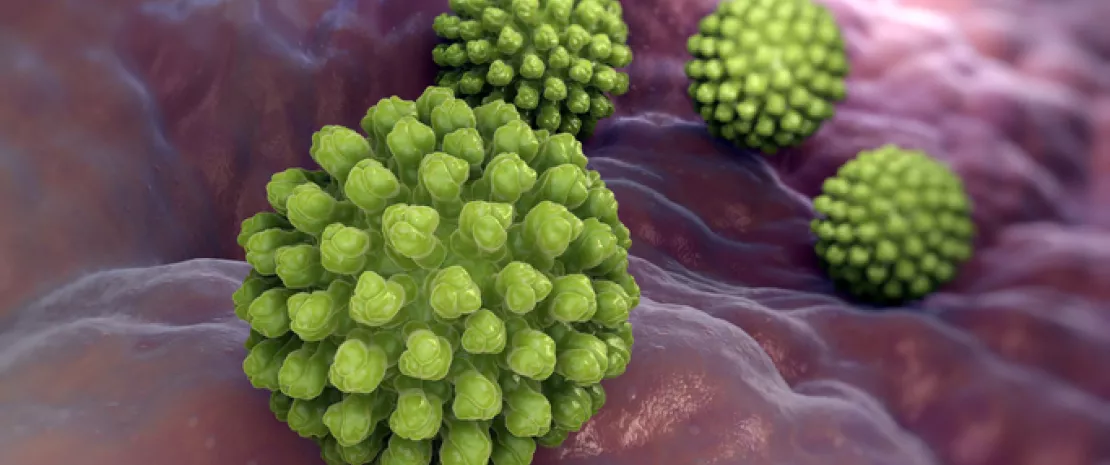The microbiota as a barrier against rotavirus
A segmented filamentous bacterium found in the microbiota of some mice gives them the ability to resist rotavirus-induced infections. A more frequent renewal of the intestinal epithelium could explain this barrier effect.
Sources
This article is based on scientific information

About this article
When a virus enters the digestive tract and is about to infect intestinal cells, it is not alone: billions of bacteria from the microbiota are also there and can modulate its infectious potential. Scientists arrived at this conclusion accidentally while working on Rag1-KO mice, a model of immunodeficient mice with chronic rotavirus infection (RV).
The microbiota as a barrier against rotavirus
These researchers non-intentionally observed the birth of a line of RV-resistant mice, which they called (sidenote: GSU stands for Georgia State University, where these mice were born ) . They then tried to understand the origin of this resistant phenotype. When Rag1-KO mice were fed the feces of GSU mice, they became resistant to RV, thus proving the role of the microbiota of GSU mice.
A segmented filamentous bacterium is involved
A series of discriminating treatments (heat, filtrations, several antimicrobial agents) complemented by an analysis of the microbiome of GSU mice indicated the specific presence of Candidatus arthromitus species, which is a (sidenote: Bacteria from the Clostridiales family, that colonize the gut of many species ) (SFB). This presence was confirmed through electron microscopy at the ileum level. In vitro, the SFB strain had the same ability as GSU mice feces to reduce the infection of epithelial cells by rotavirus. In vivo and isolated from the microbiota, it still provided, by itself, a protection against RV to immunosuppressed germ-free mice, and reduced the incidence of diarrhea in newborn non-immunodeficient mice, thus proving its own protective effect.
A new non-immune mechanism
Contrary to the researchers’ initial hypothesis, no known immune mechanism mediating the resistance to RV was involved (neither IL-22/IL-17 nor interferon λ). Several non-immune pathways could coexist: SFB could degrade a surface compound of RV and prevent it from interacting with the epithelium. But the main underlying mechanism seems to be located on the host side: the renewal of villi epithelial cells could be accelerated under the influence of SFB, thus causing the quick expulsion of cells potentially infected by RV. The microbiota could thus become a key pool to develop new strategies against viral infections.






